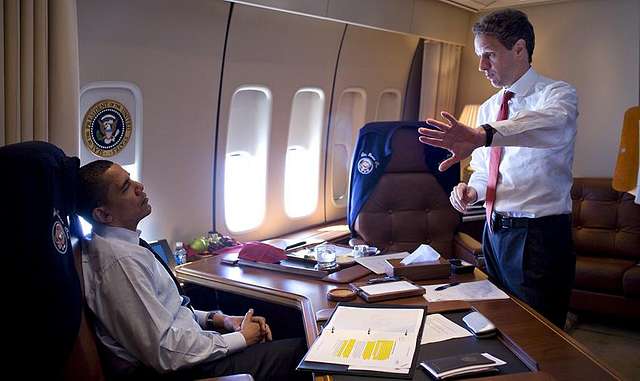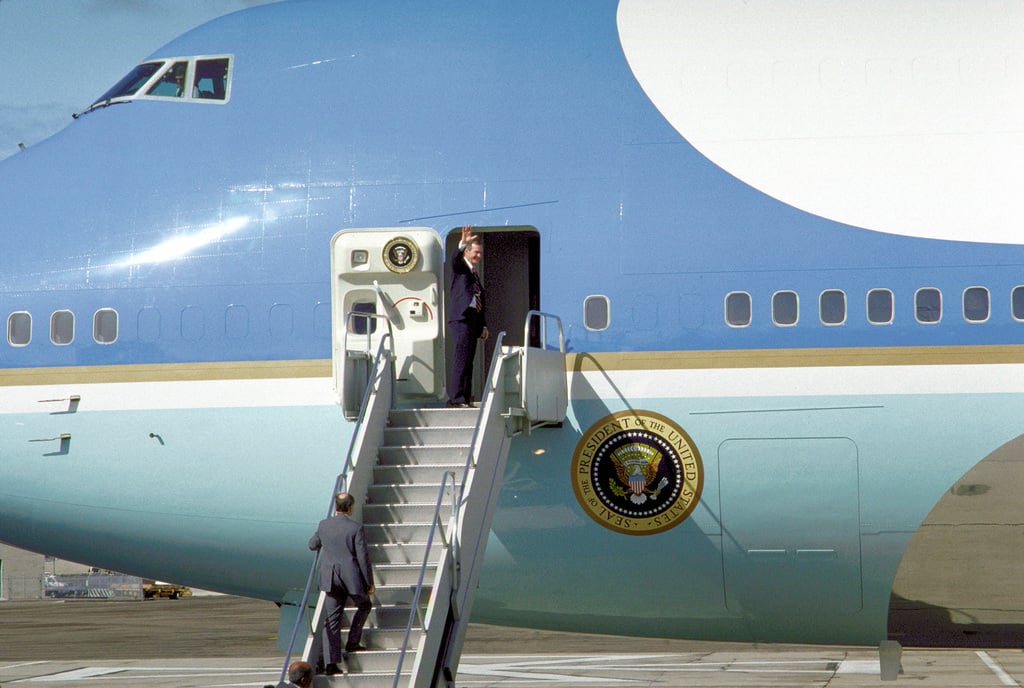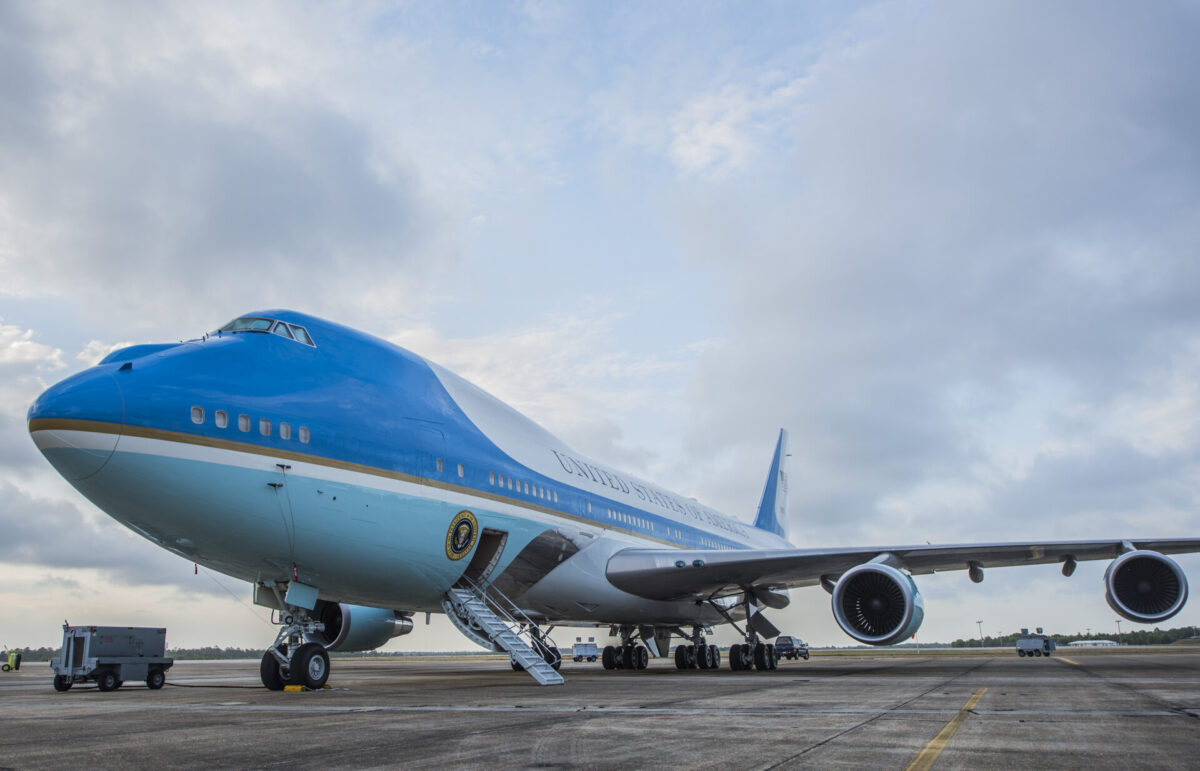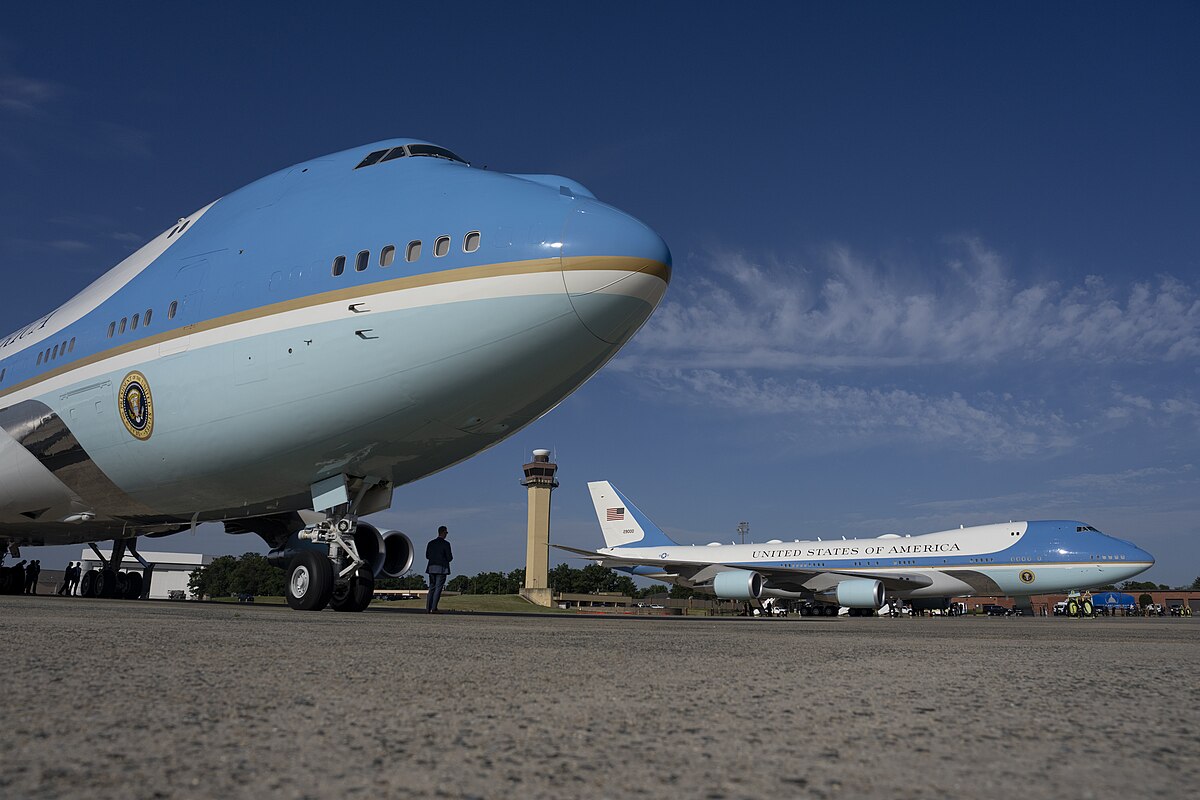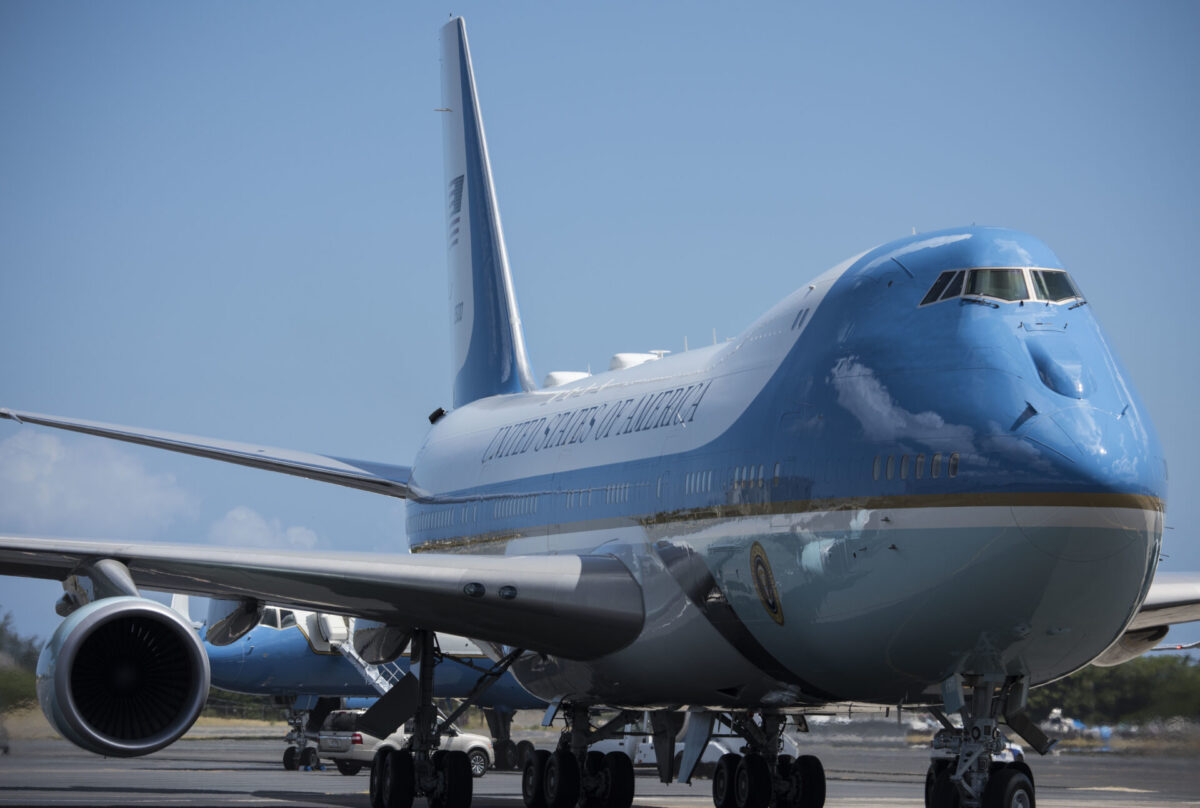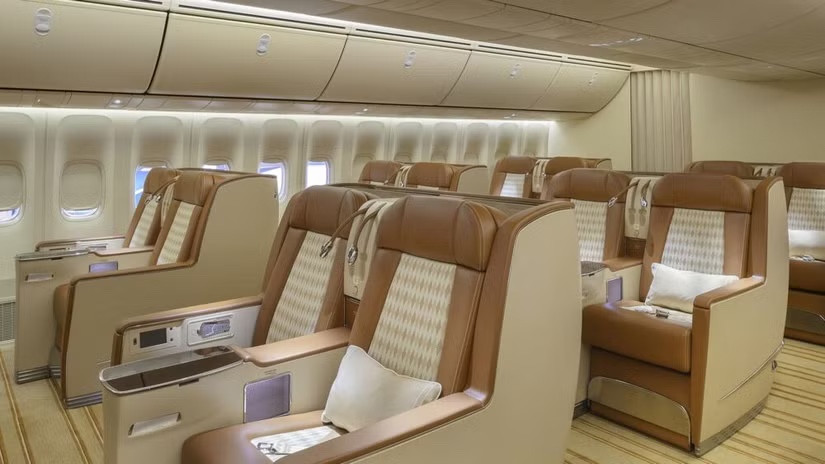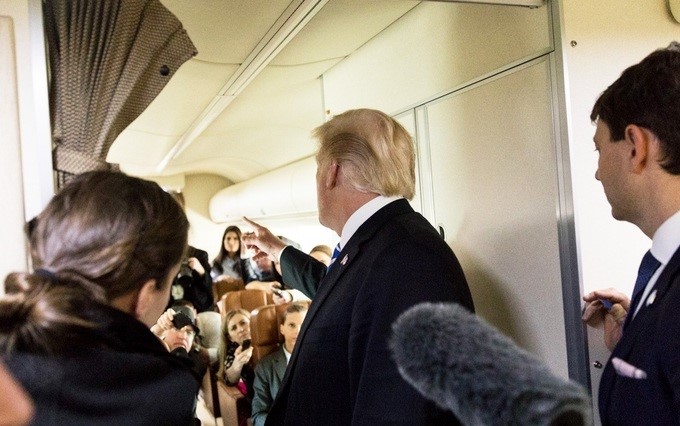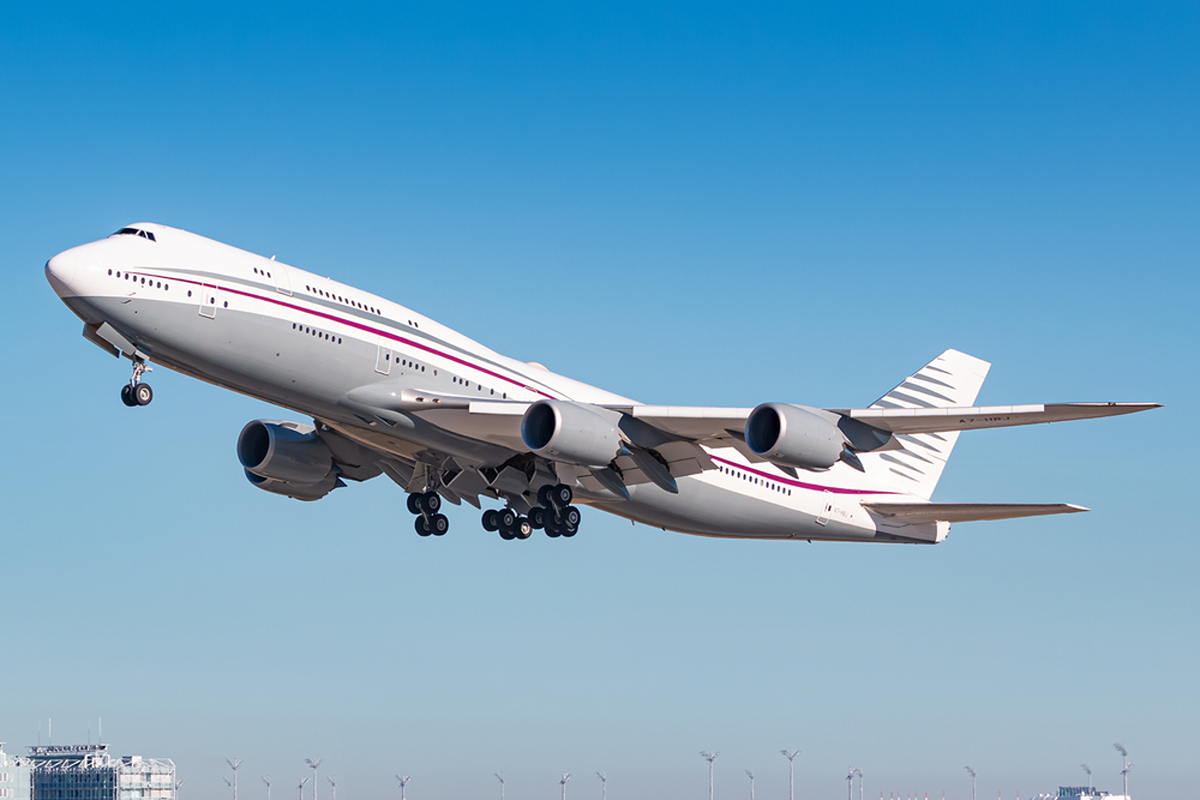It’s official: On May 21, 2025, US Secretary of Defense Pete Hegseth accepted a Boeing 747-8 private jet, gifted by the state of Qatar, to serve as Trump’s Air Force One. The lavishly outfitted jumbo jet has been used by Qatari royalty and high-ranking politicians in the past, and is worth an estimated $400 million.
But a beautiful jet does not Air Force One make, and the cost of bringing it up to standard is likely to vastly eclipse the price tag of the plane. Experts speaking to NBC News said it could cost more than $1 billion to convert the luxury jet into a secure presidential transport.
Indeed, when you consider all the modifications required on this airframe, it seems highly unlikely it will be ready to serve the president anytime soon. The incoming replacements, the VC-25Bs – also based on the Boeing 747-8 – are set to be delivered in 2029, although the USAF is pressing Boeing to speed up.
The idea of an ‘interim’ Air Force One, with all the efficiencies of a much newer aircraft, looks good on paper. But if the Qatari 747 is to one day fly the president, it’s going to take a mountain of modifications.
1. The entire interior of the Qatar 747 will need to be stripped
It’s enough to make a grown girl cry, but that beautiful interior will need to come out, or at least be significantly dismantled. One of the biggest jobs here will be the installation of a hardened, multi-layered communications system, which is not exactly plug-and-play.
Such installations require shielded cabling to be routed through the fuselage, dedicated server racks, data centers, and encryption modules, as well as custom antenna arrays on the fuselage and tail.
This can’t just be bolted on; cables will need to be run behind walls and floors, sometimes through structural components of the aircraft, and that means removing pretty much everything inside.
Added to this, there is the security aspect. Every part will need to be disassembled and checked to ensure there are no listening devices, security vulnerabilities, or spyware.
2. The layout will need some major modifications
While the Qatari 747 was used by prestigious people, it wasn’t designed to be a military jet. Air Force One is all about security, confidentiality, and enabling a literal ‘Flying White House’ that functions like a working office.
While the Qatar 747-8 does have some smaller meeting rooms and suites, much of the aircraft is given over to opulent open-plan living and luxurious spaces. It prioritizes comfort and prestige, not secure operations and logistics.
The Air Force will need meeting rooms, compartmentalized areas for classified briefings, and spaces for staff to work. A crisis command center and Sensitive Compartmented Information Facility (SCIF) will be required, all of which demand RF shielding, soundproofing and secure access controls. The open plan layout has to go.
Lavish lounges will be replaced by stations for communications, intelligence officers, military aides, and Secret Service detail. Spacious guest cabins will be converted into more modest accommodations for senior staff, and while some galleys may be retained, they’ll need to be much bigger. The current Air Force One 747s can feed up to 100 people at a time, and can store supplies for 2,000 meals – enough for seven days.
3. The jet will need a full secure communication suite
It’s possible the 747 already has some secure communications built into it, given it was used to transport royalty and senior politicians. However, it’s highly unlikely it will come close to the standard required of a US presidential aircraft.
Communications on Air Force One need to maintain the critical ‘continuity of government,’ ensuring the president can stay in touch regardless of what’s happening in the world. This will include facilities for SATCOM uplinks and downloads, secure voice, data, and videoconferencing, as well as direct connection to the National Command Authority (NCA), even in a catastrophic crisis.
The connection to the NCA underpins the US’s nuclear deterrent and demands that the 747 remains operational and in communication in the most demanding situations, including a nuclear apocalypse. Doing things by half is just not an option.
4. It will need its own defense systems, too
To become an aerial command post, the 747-8 will need to defend itself from attack. Naturally, the exact specifications of the current VC-25A defense systems are highly classified, but some inclusions are known (or strongly inferred from similar aircraft), including:
Missile detection to monitor for incoming threats from MANPADS or surface-to-air missiles
Infrared countermeasures such as DIRCM, which use lasers to blind or confuse heat-seeking missiles
Electronic countermeasures such as radar jammers, decoy dispensers, and potentially even electronic warfare suites
Over in Germany, its new VVIP Airbus A350 has had a DIRCM system installed, specifically the J-MUSIC system from Elbit. The system can be effective as a single turret installed on the belly of the aircraft, or as dual or even triple turrets installed around the plane.
Asked about the need for such defensive measures on the new jet, Germany’s Defense Minister Boris Pistorius commented, “The safety of our passengers and crew is my top priority. I am therefore delighted that our long-haul fleet is receiving this important self-protection.”
The USAF will be keen to ensure the same protection for President Trump, too.
5. A medical suite is a must-have on Trump’s Air Force One
A crucial component of the current VC-25A layout is the inclusion of a medical suite. The facility is compact but comprehensive, being described as a miniature hospital, housed in a dedicated room mid-cabin. It is staffed by a flight surgeon, who is a permanent member of the Presidential Airlift Group.
Inside the suite, there’s an array of medical supplies, including:
A fold-down operating table
A fully stocked cabinet of pharmaceuticals
A defibrillator
Oxygen supplies
Blood pressure monitors
Glucose meters
There’s probably a lot more too, but the USAF keeps the specifics of the facility tightly guarded. It is understood that, in a worst-case scenario, basic surgical procedures can be performed onboard, and supplies of blood, including the president’s type, are always carried just in case.
The plans for the forthcoming VC-25Bs called for an expansion of this facility, including improved infection control systems, implemented in the wake of COVID. While the Qatari plane might not need anything quite so comprehensive, even as an ‘interim’ Air Force One, it will need a medical suite of a good standard.
6. The jet will need to become self-sufficient
Less flashy but no less important, the VC-25As have an incredible level of self-sufficiency. The idea is that they allow the president to travel anywhere in the world without relying on host-nation infrastructure.
This begins with the built-in air stairs, which we’ve seen so many presidents wave from over the years. The VC-25As have stairs forward and aft, meaning passengers can be disembarked at any location without jet bridges or ground equipment.
The self-reliance continues with the VC-25A’s onboard cargo loading system, allowing crews to manage luggage and equipment without any assistance. This adds to the high security of the aircraft and lowers the risk of any materials being tampered with.
Then there’s the power supply. With the complex communications systems, suite of computers and servers, medical equipment and defensive systems onboard, Air Force One requires a lot of power, far more than a commercial 747-8 or even the Qatari plane. On the VC-25As, this is accommodated with integrated generators in every engine, a powerful APU in the tailcone and multiple high-capacity batteries.
Keeping systems running for extended periods, even in the event of a cyberattack, engine flameout or generator failure, is absolutely crucial. As such, there is redundancy built into everything, and then redundancy built into the redundancy systems. Retrofitting this to the Qatari jet will be a mammoth task.
7. And then everything needs to be shielded from EMPs
On the current VC-25s, EMP shielding ensures that the aircraft remains operational in the event of a nuclear detonation, high-altitude EMP (HEMP) attack, or directed energy weapon strike, all of which can cripple unprotected electronics. The full extent of the shielding is classified, but it can be expected to include:
Shielded cables and wiring
Faraday cage architecture to protect internal electronics
Hardened avionics
Filtered power inputs to protect against surges
To bring the Qatari 747-8 to this standard would require full rewiring, airframe modifications and the replacement of avionics and power systems. All the modifications would need to be rigorously tested and certified, making this one of the most technically demanding and expensive parts of the conversion.
8. Will Trump’s Air Force One have aerial refueling capabilities?
You might have noticed that the two VC-25As that currently fly the president have protruding bumps on their noses. These are actually aerial refueling receptacles, a rather unique feature of the aircraft. The 747-based Boeing E4 Advanced Airborne Command Post (AACP) also has this feature, but the only place it’s seen outside of the US is in Iran, where it appears on the KC-747s (or KC-33s) of the Iranian Air Force.
Although the pilots are trained and well-practiced in aerial refueling, the current aircraft have rarely made use of that capability. As part of the cost-cutting measures for the VC-25B project, TWZ reported in 2019 that the aerial refueling capabilities had been stripped from the plans for the new Air Force Ones.
As such, it’s unlikely the USAF will specify aerial refueling to be part of any makeover the Qatari jet gets, despite concerns that the ‘continuity of government’ could be risked by the president having to land to refuel.
The Qatari 747 has a lovely area for staff and entourage towards the rear of the lower deck. A spacious cabin is laid out with business class leather recliners in pairs, with soft lighting and cream carpet throughout.
While the US media is probably salivating at the thought of traveling in this level of comfort, it’s unlikely the cabin will stay as it is. The White House likes to fly with a press pool of around 12, and has traditionally seated them in an economy-style cabin much smaller than this.
With plenty to fit into the main body of the aircraft, the press cabin is likely to shrink somewhat, and those recliners replaced by standard 3-3 seating.
10. The crucial ingredient: Operational readiness
Flying as a presidential aircraft requires a whole other level of maintenance compared to commercial or private jets. For the 747 to fly in the role of Air Force One, it needs to be ready to launch at a moment’s notice and fully functional in any scenario, from diplomatic visits to nuclear war.
The USAF calls this ‘operational readiness.’ To meet this requirement, presidential aircraft must be meticulously maintained, a job that is carried out by a dedicated team from the 89th Airlift Wing at Joint Base Andrews.
Keeping a presidential aircraft operationally ready means daily checks, round-the-clock monitoring, and keeping the aircraft fully fueled and stocked. Redundancy is critical, ensuring multiple power sources, backup avionics, and other measures are operational at all times.
Sourcing parts for the jet isn’t going to be as easy as you might think, either. When spares are being procured for the current VC-25As, each individual part goes through a rigorous vetting process to protect against sabotage and espionage.
Is there any point in modifying the Qatari 747-8?
With everything taken into account, it’s clear that turning the Qatar aircraft into a working Air Force One is going to be a long, expensive process. While it seems a good base to start from, in reality, it would need to be stripped and refitted, making the lavish interior rather useless.
If the US does go down the road of modifying the 747, it’s already behind the development of the VC-25Bs. Boeing has been working on those aircraft since 2018, and they’re not expected to deliver for another four years, illustrating the immensity of the task at hand. It’s possible the VC-25Bs could even be ready before the Qatari jet, and does the USAF really need three presidential 747s?
Analysts at TWZ have suggested the Air Force could strip the Qatari aircraft for parts and use these in the VC-25Bs or the E-4C ‘doomsday plane’ project. It sounds more plausible than conversion, but wouldn’t be the most diplomatic use of Qatar’s very generous gift.





